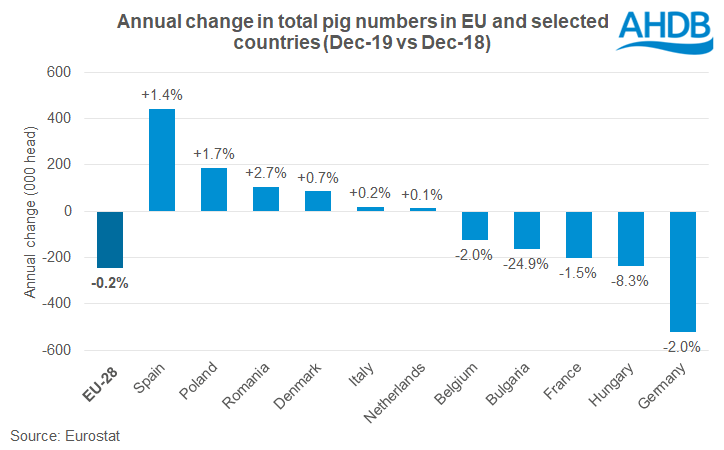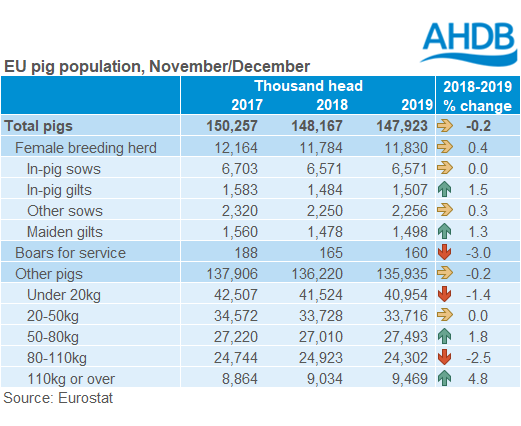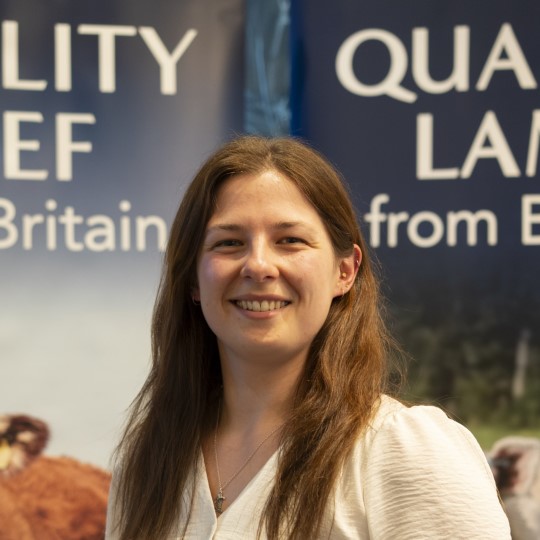EU pig numbers hold stable
Wednesday, 11 March 2020
By Hannah Clarke
The total number of pigs in the EU (including the UK) remained relatively steady in the year to December 2019, at 147.9 million head. This is according to provisional data from Eurostat. The relative stability follows a period of decline, which had still been apparent in the May/June census.
Germany had another year of herd contraction, with total numbers down 520,000 head on the year amid future uncertainty. Numbers in France, Belgium, Bulgaria and Hungary also fell. This was enough to offset continued growth in the Spanish herd, which was up 440,000 head from December 2018. Numbers also grew in Poland and Romania, perhaps suggesting some improvement in the management of ASF.

Looking in more detail, the total EU female breeding herd remained stable on the year at 11.8 million head, with a small degree of growth coming from gilts. Noticeable declines came from Germany (-53,000 head), France (-34,000 head) and Hungary (-27,000 head). However, growth in Dutch and Spanish breeding sow numbers (+ 80,000 and +77,000 head, respectively) outweighed this.
The growth in Dutch sow numbers in December is somewhat unexpected, considering the industry’s current environmental regulations. It also contradicts the trend in the country’s April census data, and anecdotal reports, so may not be representative of current market conditions. This will be something to watch going forward.

The largest negative contributor to overall EU numbers was the number of fattening pigs of 80-110kg, which fell 620,000 head on the year. Numbers of pigs under 20kg also fell notably, by 570,000 head. This outweighed increases in the number of fattening pigs of 50-80kg and over 110kg.
What might this mean for production?
While there is variation among member states, stability in EU pig numbers overall at December 2019 points to stable production in the first half of 2020. Slight growth in sow numbers suggests that production could record some modest growth in the latter part of the year. How trends develop in the Dutch herd will be influential in this. Of course, this will be monitored as the data comes forward.

Sign up for regular updates
Subscribe to receive pork market news straight to your inbox. Simply complete our online form.
While AHDB seeks to ensure that the information contained on this webpage is accurate at the time of publication, no warranty is given in respect of the information and data provided. You are responsible for how you use the information. To the maximum extent permitted by law, AHDB accepts no liability for loss, damage or injury howsoever caused or suffered (including that caused by negligence) directly or indirectly in relation to the information or data provided in this publication.
All intellectual property rights in the information and data on this webpage belong to or are licensed by AHDB. You are authorised to use such information for your internal business purposes only and you must not provide this information to any other third parties, including further publication of the information, or for commercial gain in any way whatsoever without the prior written permission of AHDB for each third party disclosure, publication or commercial arrangement. For more information, please see our Terms of Use and Privacy Notice or contact the Director of Corporate Affairs at info@ahdb.org.uk © Agriculture and Horticulture Development Board. All rights reserved.

